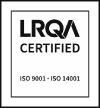Frequently Asked Questions
Frequently Asked Questions
How long does it take for Alliance Tooling to complete an injection mould tool?
Turnaround times vary based on the complexity of the project, design specifications, and other factors.
For prototype tooling, you can expect approximately 1-4 weeks, depending on the project details.
For full production tooling, this rises to approximately 6-10 weeks turnaround time, again depending on the specific of the project design.
If you’d like a precise estimate for your project, get in touch with us to discuss your specific requirements.
Why would I choose Alliance Tooling’s UK-based toolmaking service?
By offering both UK-based and Chinese facilities as options for our tool manufacturing, we have an option to suit every project.
Advantages for using our UK service are increased communication and control over the project locally, adherence to strict quality standards, a shorter more manageable supply chain, sustainability benefits, and support for the local economy.
We’re confident should you opt for either our UK or Far-Eastern service, you’ll receive the same high-level customer service, project management and manufacturing outcomes expected from an industry-leading toolmaker.
Why would I choose Alliance Tooling’s Far-Eastern toolmaking service?
By offering both UK-based and Chinese facilities as options for our tool manufacturing, we have an option to suit every project.
For larger suites of tools or cost-effective projects, our Chinese facilities can provide an attractive alternative, with increased capacity for high-volume production.
Regardless of if you’re opting for manufacturing in the UK or in China, Alliance Tooling bridges the overseas gap, closely managing all tooling projects ensuring the same quality standards are met, no matter where in the world your tools are manufactured.
Can I see examples or case studies of Alliance Tooling’s work?
Absolutely!
You can explore our news and case study page to learn about our successful projects.
It showcases real-world applications of our mould tools and demonstrates our capabilities.
Does Alliance Tooling have any specific quality certifications or accreditations?
Yes, Alliance Tooling adheres to high-quality standards.
Visit our accreditations page to read more.
Need Support?
Free Expert Advice
Fully equipped toolroom
Real shot life guarantees
Still have questions? Get in touch
To discuss your injection mould tooling requirements, arrange a visit to our facilities or request a quote, please use the contact form below.
All essential fields are indicated with an asterisk (*) and any other information you provide will help us to respond to your enquiry efficiently.
Or, if you know exactly what you need, you can simply upload your specifications, and we’ll get back to you with a quote or to discuss how we can contribute to your project.




